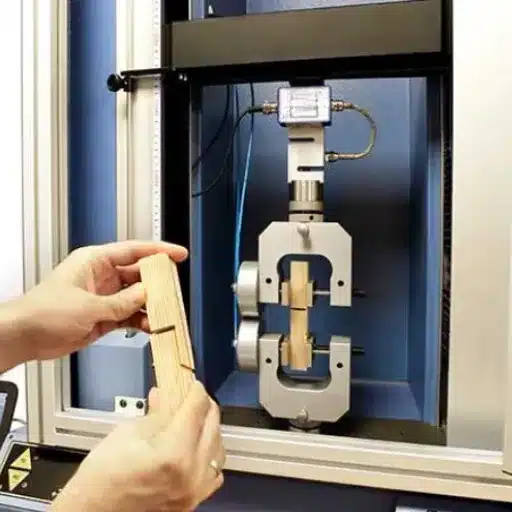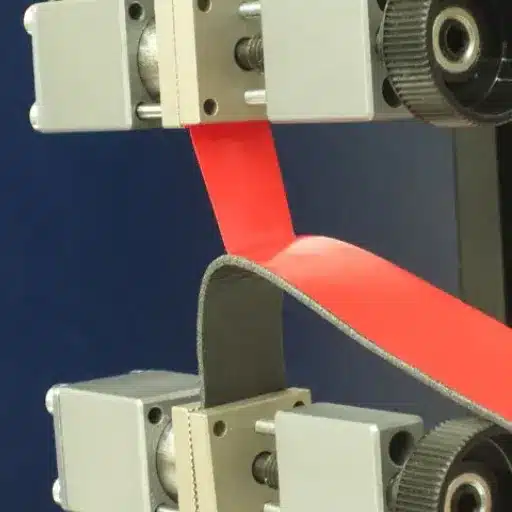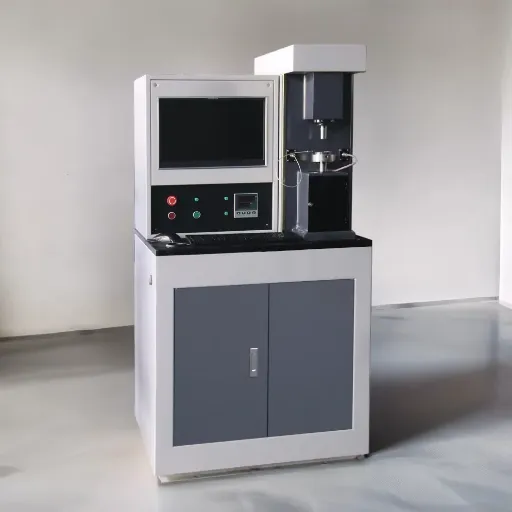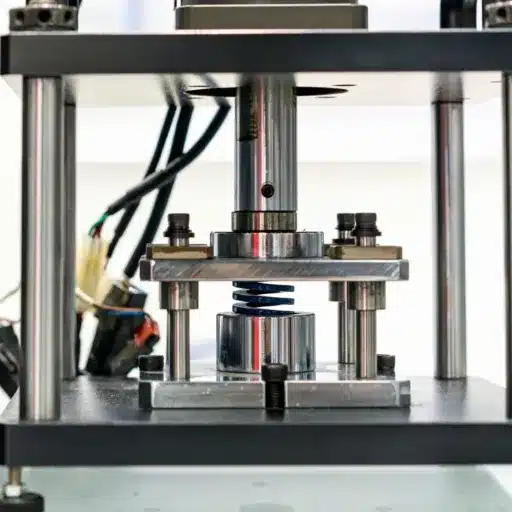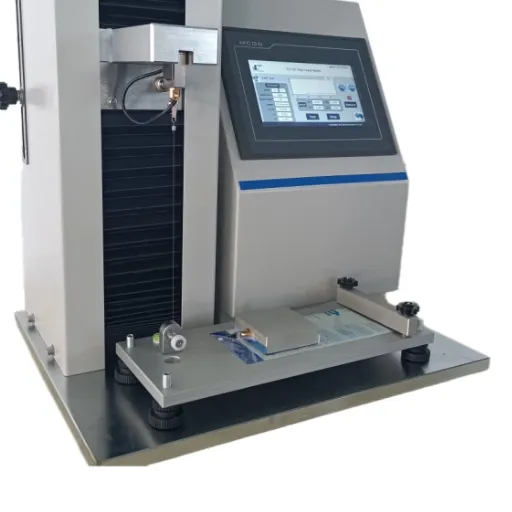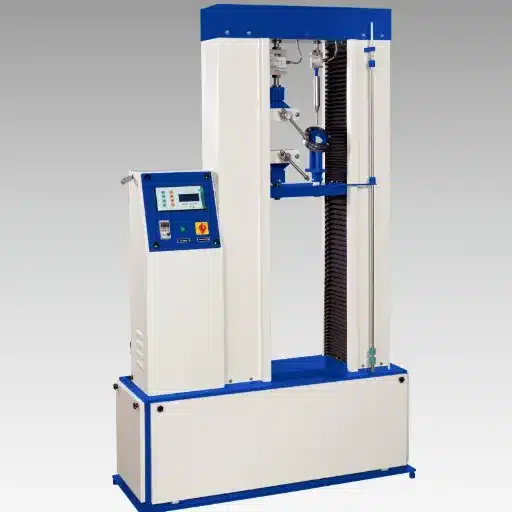No other process has shaped the manufacturing industry quite like metal forming. This is particularly due to the development of bending machines, which are notorious for their efficiency in metal cutting and shaping. Enabling industries such as the automotive and construction industries to unlock new possibilities. This blog seeks to address the core functionality of bending machines, their characteristics, edges and overall importance in modern-day metal forming. Unlike seasoned professionals, those with a basic understanding of mechanical technologies will also enjoy a treasure trove of useful information about the highly precise machinery that has transformed the engineering landscape. Prepare yourself for a journey that takes you beyond the mysteries of CNC bending, CNC technologies and advances in fabrication procedures, and discover the prospects of modern-day metal shaping artistry.
What is a CNC Bending Machine?
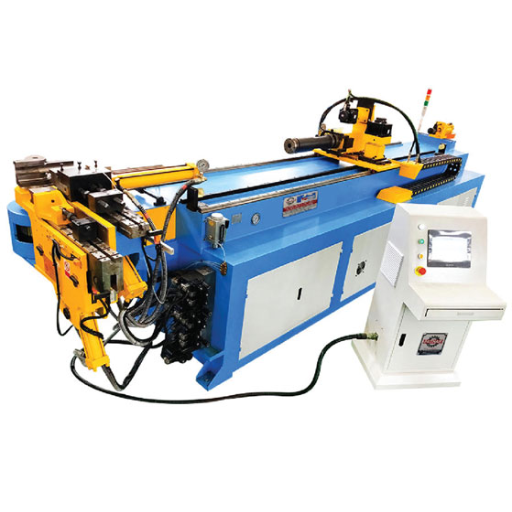
A CNC bending machine is a type of machine that uses a computer to control the bending and shaping of metal sheets or tubes. The abbreviation CNC denotes that the machine is Computer Numerical Controlled which means it can bend these components as per the specified parameters of the program loaded into the machine. Bending machines of this type are used in the rigidly defined fields like automotive, construction, and aerospace industries which require precision and repeatability within limits. Automating the bending process with the help of CNC bending machines enhances efficiency and control of materials while maintaining uniformity across varying components.
How does a CNC Bending Machine work?
A CNC bending machine carries out the mechanized bending of metal tubes or sheets through the automation of advanced technology. The process starts with either the operator or an engineer inputting particular instructions into the CNC computer’s memory. They make use of CAD or CAM software to do so. The angles and lengths along with the types of bends are decided according to the instructions given to the machine for specific projects. The machine does perform these actions in the physical realm.
Important components of the CNC bending machine are the hydraulic or electric press, the gripping units, and the bending dies. They are the key elements that create digital graphics in the physical realm through CNC’s mechanized systems. Sensors, along with a feedback system, put continuous monitoring around the bending area and work on sustaining the structural integrity of the workpiece while maintaining specified and exact angles and other parameters for the bend. Some of the advanced bending machines do possess the ability to work with three-dimensional models which helps in validating actions before commencing with execution.
IOT enabled CNC machines have a recent studied accuracy of +- 0.1mm and 0.2 deviation for angles. With robotic feeders and unloaders, some models are reported to achieve over 3000 bends an hour. Such performance is desirable for mass production. Increased use of IoT sensors and devices on these machines allow for remote monitoring, predictive maintenance, and advanced troubleshooting.
Automation and precision engineering have solidified CNC bending machines as crucial devices for modern factories where speed is prioritized, particularly in sectors that need precision and high production rates.
What are the key components of a CNC Bending Machine?
This bending machine CNC (computerized numerical control) is capable of handling all processes related to the automated bending of metals. It consists of multiple parts for the machine to work with utmost precision and accuracy, and to operate efficiently.
Control Unit
Likewise, the CNC control unit is pre-embedded in the control unit. The control units control their movement, force, accuracy, and other subsets of the CNC system with the help of pre-set software. In modern devices, interfaces with touch screens are provided for CNC parameter input integration with IoT for advanced diagnostics and monitoring.
Bending Tools (Punch and Die)
Defining the bending gets us to the bending tools. From applying force onto the metal and the die, lending tools provide for the angled recess needed, construct the opening and void with the specific angles. Given the numerous shapes and angles to be constructed, these tools are specialized for diverse patterns and shapes.
Hydraulic or Electric Drive System
The systems experienced mechanical power has enabled the dies and the moving of motor, punches and arms to work in tandem. High power oil systems are best suited for thick consumables, while the quieter and less consuming electricity motive equipment provides for speed and sharp works.
Back Gauge System
The back gauge adjusts the positioning of the metal sheet to the bending axis to facilitate repeatable bends. Its Back Gage facilitates high production repeatability due to low errors for precise control over dimensions and alignment.
Frame and Bed
The frame and bed of the machine absorb the structural stress it is subjected to while maintaining automation accuracy and tuneability microns during operation, maintaining high durability, structural stability, and deformation resistant under high pressures. For smooth operation, they have high durability materials to withstand the forces produced during the bending process.
Sensors and Measuring Systems
These are essential during bending for maintaining utmost precision. The Advanced sensor systems measure and track changes of the system output to deviation, material thickness, and rotational alignment, then relay real-time analysis results on system specified adjustable parameters to the control subsystem for immediate counter-response execution back.
Clamping System
The Clamping system holds the Work pieces stationary through out the all the bending actions to eliminate slippage and improve accuracy. Some of the systems are automated to reduce set up times and improve safety.
Safety Features
To comply with workplace safety standards, modern CNC bending machines are fitted with light curtains, emergency shutdown validation, and safety shields.
Latest Data and Advancements
Precision Levels
Due to the configuration of highly accurate sensors, tolerances for CNC bending machines are as precise as ±0.1mm which makes them suitable for the aerospace and automotive industry.
Cross-Industry Collaborations
Per the research market analysis report of 2023, more than 65% of recently produced CNC bending machines now feature IoT integration, permitting remote monitoring and decreasing downtime by as much as 30%.
Sustainable Manufacturing Practices
Implementation of electric drive systems on CNC bending machines has reduced energy consumption by almost 20%, marking progress in eco-friendly practices in CNC machining.
With these advancements and parts, CNC bending machines are setting the pace for the revolution of manufacturing, providing unmatched precision and flexibility in an ultra-competitive market.
What industries utilize CNC Bending Machines?
CNC bending machines are employed in many industries because they accurately and efficiently shape components from metal. Listed below are some of the primary industries that benefit from CNC bending technology.
Automotive Industry
CNC bending machines are integral to the production of various components of automobiles, including exhaust systems, chassis, and structural reinforcements. As per the industry statistics, the automotive industry alone constitutes nearly 30% of the global consumption of CNC bending machines owing to the precision and volume manufacturing requirements of this sector.
Aerospace Industry
CNC bending machines are used in the aerospace industry to manufacture several lightweight but strong parts for aircraft such as supports, frames, and hydraulic tubing systems. These machines are able to meet the exacting safety and performance standards required. Opportunities in the global aerospace market are expected to grow at a CAGR of 6% through 2030, which means the demand for CNC bending solutions will also increase substantially.
Infrastructure and Construction
Construction works usually necessitate specially designed structural reinforcements, pipes, and beams, so custom order metal fabrication is needed. CNC Bending increases the efficiency of manufacturing these parts which consequently improves project completion rates. The infrastructure industry related to CNC Bending is booming hand in hand with urbanization in developing regions.
Furniture and Interior Design
The CNC Bending Machine is also used for crafting metal frames of furniture and other decorative items in the high-end furniture design and interior design industry. This machine allows the creation of very delicate designs and combines beauty with performance to satisfy market demand.
Renewable Energy Sector
CNC Bending Machines are used extensively to manufacture parts for wind turbines and other components like solar panel mounting systems that are associated with renewable energy. Mounted solar panels are increasingly sought after globally therefore, the renewable energy industry has become one of the major markets for CNC bending machines.
Medical Equipment Industry
Fabrication of medical devices and instruments such as surgical tools and hospital paraphernalia requires precise and exact repeatability that only CNC Machining can offer. The medical device market is one of the fastest growing segments in the world due to the increasing demand for advanced services and is expected to reach $500 billion in the coming years.
These industries, alongside others, exemplify how the CNC bending machine has advanced innovation and efficiency across numerous sectors of modern industry.
How does the CNC Bending Process work?
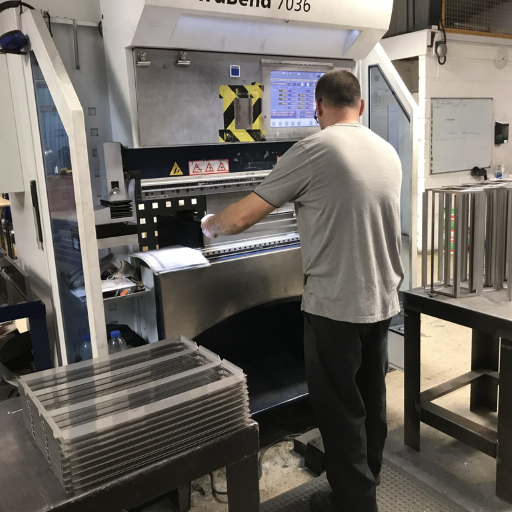
The CNC bending procedure utilizes computer numerical control (CNC) technology for the full automation and precise control of the bending process associated with metal sheets or tubes. To begin, the material is securely placed in a fixation device to clamp it into position. After preparation, a CNC machine executes the force application through a bending tool designed to apply a pre-defined shape onto the material. The process depends on the accuracy of rigid structures, propositions, and calculations to achieve true adeptness in yielding bends. This method is exceptionally accurate and efficient, contributing to the reduction of human errors, which is beneficial when manufacturing intricate or high-volume components.
What is the role of numerical control in CNC Bending?
Numerical control (NC) is critical to CNC bending due to its programmable commands which shape materials accurately. With regards to bending, CNC machines literally can perform very intricate bends with the use of numerical control because they can through sequential programming for angle, radius, and order of several bends. Control of this nature provides precision and accuracy, especially on the intricate items, regardless of whether it is mass production.
High-end CNC machines feature NC scanning technology combined with 3D simulation software for CNC bending, allowing operators to simulate and optimize the bending operations before manufacturing. Industry benchmarks suggest that CNC bending machines equipped with modern NC systems are designed to perform to precision benchmarks of ±0.1mm on all components ensuring consistent product quality. In addition, NC allows process automation which simplifies the setup and enhances efficiency. For instance, automated CNC bending processes have been proven to increase production efficiency by 30% when compared to manual bending techniques.
Additionally, numerical control allows for real-time changes to be made during the operation, such as addressing springback adjustment, which is a common problem in bending. This makes it possible to produce correct results without repeatedly going through the tiresome process of manual recalibrations, saving precious resources in the process. In general, the functionality NC offers to CNC bending systems is critical in modern manufacturing, where precision, repeatability of processes, along with the timely accomplishment of varying design requests, is essential.
How does the bending process ensure bending accuracy?
Bending accuracy is achieved using different methods such as modern technology, high-quality equipment, and meticulous rotation algorithms, tailoring specific values to scope definitions. CNC machines for bending rely on modern NC and Computerized Numerical Control (CNC) systems for accuracy. Such systems employ feedback sensors that make real-time measurement and compensation adjustments for parameters like secondary effects of springback, thickness of material, and tool wear. For laser systems, bending angle monitoring provides feedback that machine monitoring systems use for real-time adjustments with accuracy thresholds of ±0.1° angle.
Bend and form tooling plays an increasingly integral role. Hardened punches and dies fitted on modern Press Brakes equip these machines with structural integrity, crafting shaped tooling aiding with accurate positioning, maintaining set geometry over cyclic loading, while tool positioning and alignment systems execute pre-operation verification to ensure all required alignment processes have been successfully completed prior to starting the operation. Smart Tools further decrease inaccuracy margins through automated targeting systems that identify those regarded as redundant misalignment mechanisms.
Data from industry reports suggests that CNC-equipped bending machines can increase the production rate by almost 25% while reducing material waste by up to 30%. Such improvements are critical for the automotive, aerospace, and construction sectors which rely on high levels of precision to adhere to stringent tolerances and compliance benchmarks. The bending processes are being made more precise and easier to implement, thanks to the incessant progress of software and hardware automation technologies. This, in turn, makes the processes more efficient, sustainable, and economical for manufacturers worldwide.
What is the difference between hydraulic and CNC bending machines?
There’s a substantial difference between the operations, accuracy, and purpose of hydraulic bending machines and CNC (Computer Numerical Control) bending machines. The former makes use of a hydraulic power system to perform bending operations with particular emphasis on strength and capacity. They are particularly valued for their strength when handling heavy-duty materials like thick steel and other metals. Moreover, they are most suitable for simpler bending processes where high force is required, as this is offered at an economical cost. That said, these machines tend to rely on manual settings which leads to a lack of automation—this, coupled with the need for manual adjustments, leads to these machines often lacking precision. This results in slower production speeds.
CNC bending machines operate quite differently, incorporating computer-controlled systems, as the name suggests, to optimize and automate bending processes. The core selling point of these machines is their unmatched precision and the ability to maintain high levels of repeatability as they follow program instructions. CNC machines are equipped with advanced software that lets operators craft sequences for the machine to execute which results in intricate shapes, multiple angles, and advanced bending patterns being achieved with ease. These machines are also able to work with varying levels of materials while minimizing waste making them ideal for aircraft and electronics manufacturing industries where precision is of utmost importance.
Recent statistics underscore the heightened utilization of CNC bending machines on account of their convenience and effectiveness. Market research shows that CNC bending machines can increase productivity by 30% over traditional hydraulic machines and slash material scrap by almost 15%. Even though the initial cost of CNC machines is quite high, their operational savings from reduced long-term costs, quick cycle times, and minimal labor make them the ideal option for companies looking to grow their operations while having to maintaining quality.
Why use CNC Bending in Metal Fabrication?
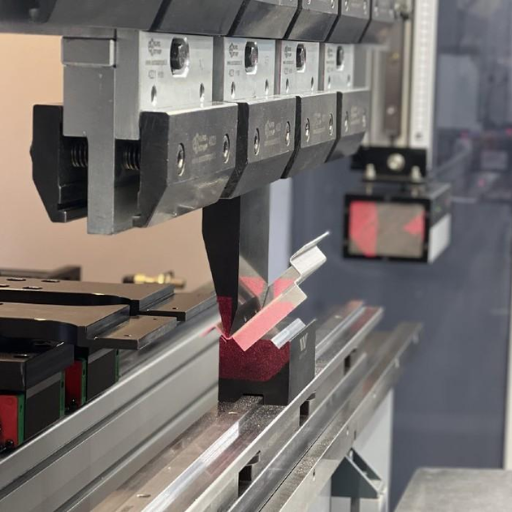
Due to its effectiveness, accuracy, and dependability, CNC bending is critical in the field of metal fabrication. It ensures high level spatial estimation when bending metal parts, thereby averting discrepancies in large scale production. The technology improves the speed of production, lowers industry costs because of their material efficiency, and decreases waste. Moreover, CNC bending machines are adaptable, conveniently servicing different industries by working with various designs and materials.
What are the benefits of using CNC bending over traditional methods?
Due to effectiveness, automation, and precision, CNC (Computer Numerical Control) bending has many advantages over traditional bending methods. Here are the major advantages backed by insights and data:
Improved Precision and Accuracy
All of the results from CNC bending are reliable due to its use of modern equipment. Its accuracy is proven by the tolerance levels of about ±0.05 mm, which surpasses the accuracy offered by mechanical and manual procedures. With such high accuracy, it will be possible to reduce work that has to be redone which ensures reduced expenses and saves effort.
Speed and Efficiency
Traditional methods may take a lot of time to execute multiple bends, but that is not an issue for CNC machines, they can complete intricate bends in a very short time. Cycle times for traditional methods drastically increase but it is the opposite for CNC machines; some of them are able to perform more than ten bends in a single second. These benefits improve outputs, especially for industrial-grade products.
Adaptability and Flexibility
It is now common to find modern machines that utilize titanium, stainless steel, steel, and even aluminum. They can as well change easily from one design to another which makes them very useful in sectors that support product tailoring or unique geometry variations.
Cost-Effectiveness
The purchase of CNC bending equipment has a high initial cost; however, it saves money in the long term due to lower material wastage, faster production rates, and reduced labor costs. Research shows that manufacturers achieve ROI (Return on Investment) in 6-12 months from the implementation of CNC technology on large scale production lines.
Consistency Across Large Production Runs
Perhaps the most beneficial advantage of CNC bending is its ability to produce thousands, if not millions, of extremely similar parts. This guarantees quality control which is crucial for companies in the automotive, aerospace, and construction industries.
Integration with CAD/CAM Software
CNC bending systems can be directly linked with CAD/CAM software for easy workflow implementation. Engineers are able to upload designs and reduce the chances of error that come with manually programming bends. Industry research states that this integration has improved production accuracy by 30% in some cases.
Reduced Material Waste
Operator miscalculations and errors often result in waste with traditional bending methods. These issues are practically eliminated with CNC machines since they are programmed precisely, thus reducing scrap rates up to 50% according to some top manufacturing companies.
Enhanced Safety
Musculoskeletal disorder risks associated with the bending process are significantly reduced as CNC bending machines fully automate programmable operations. Automatic control increases workplace safety for operators by ensuring that hazardous tasks are performed without human intervention.
CNC gas metal arc welding improves productivity, quality metrics, and operational efficiency across manufacturing sectors which signifies a significant advancement in metal fabrication technology.
How does CNC Metal Bending impact labor costs?
The automation brought on by CNC machines eliminates the need for skilled workers in repetitive tasks. However, their accuracy and consistency still require trained personnel. In contrast, CNC machines autonomously control manufacturing procedures with little aid from human operators which enhances efficiency. As such, services that require manual supervision are no longer needed. With CNC bending, businesses are reporting labor cost savings of as high as 30%. Most of these savings stem from reduced reliance on skilled labor for tedious activities like tool changing and precision checking.
Widespread adoption of these CNC technologies allows one operator to manage several machines, reducing and even eliminating staff requirements. These developments achieve enhanced savings as expenditures decrease while precision and quality are upheld at the same time. Furthermore, compared to conventional metal fabricators, the amount of time and capital spent on training CNC operators is considerably less which aids in long-term cost reduction, further benefiting the business.
With such advantages, small-to-medium businesses are set to gain the most from reallocating resources to research and development or increasing production capacity. The adoption of CNC metal bending supports maximum output and quality, enabling businesses to drive profitability.
What is the importance of tolerance in metal bending?
Tolerance in metal bending is critical to ensure accuracy and uniformity during each stage of manufacturing. It refers to the degree of variation that is permissible, and it directly impacts the functionality, fit, quality, and overall value of the product. Greater tolerances coincide with greater deviations from specified measurements due to the amount of precision required, which is most visible in the bends made in the aerospace, automotive, and construction industries.
Ineffective tolerances limit the manufacturability of components which can result in imbalanced parts, weak structures, and increased costs due to rework or waste. Generally, for metal bending, the tolerances fall within ±0.1 mm to ±0.5 mm based on material thickness, bend radius, and design complexity. More stringent tolerances are essential for the manufacturing of medical devices or precision-engineered components, while tolerances are less forgiving for general-purpose construction materials.
The relevance of tolerance increases exponentially with the volume of the production run. Automated systems like CNC metal bending machines ensure that tolerances are upheld throughout the repetitive motions of the machinery. For instance, research cited by Fabricator.com argues that CNC machinery with advanced sensors reduces deviation within multiple parts down to ±0.2 mm, significantly lowering defect rates compared to manual bending processes.
In addition, effective tolerance control reduces excessive wastage of materials. Fabricators, within the bounds of high precision standards, with proper planning, can attain optimal material savings which leads to cost efficiency and enhanced sustainability. This is of utmost importance when dealing with expensive materials such as titanium or stainless steel, which require strict reduction of scrap materials.
In summary, managing tolerances on metal bending increases the ease of assembly, structural soundness, and, most importantly, operational efficiency and cost savings, thus reinforcing the significance of such an approach in contemporary manufacturing systems.
What are the applications of CNC Bending in Fabrication?

CNC bending exists in a multitude of industries due to its precision and adaptability. Some of its applications are given below:
Automotive: Helps in the production of exhaust systems, structural frames, and brackets.
Aerospace: Important for the production of lightweight, high-strength parts, which include engine supports and airframe components.
Construction: Key for the production of beams, pipes, and other structural elements.
Electronics: Used for the production of enclosures, brackets, and panels of electronic devices.
Furniture Manufacturing: For modern, sturdy furniture design, metal parts are shaped using CNC bending.
These applications illustrate the reliance of various industrial sectors on CNC precision bending for dependable, accurate part design and manufacturing.
How is CNC bending used in the aerospace industry?
CNC bending the aerospace industry relies on for the creation of exact, durable metal parts for both aircraft and spacecraft. Fabrication tolerances and quality requirements are extremely strict in aerospace because of the importance of its operations. These tolerances are CNC bending features with sharp controls for angles, radii, and dimensional control in sheet and tubular metal components.
Examples of CNC bending applications in the aerospace industry are the production of advanced structural constituents like the fuselage and wing parts, as well as the formation of hydraulic and fuel lines which have complex bends for cavities of limited volume. Often, airframe assembly, clamps, brackets, and CNC parts for the cabin are also produced with this method.
The greater efficiency of CNC bending for aerospace applications has recently been improved further. Complex bends that were previously created with elliptical and conical bending machines can now be performed by modern automated multi-axis machines with little to no operator attention and interaction. This shift alone decreases the production time considerably. As some industry reports cite, the worldwide aerospace CNC machining market is expected to rise with a CAGR of 7-9% throughout 2030 due to the increasing aircraft production as well as the need for more advanced lightweight fuel-saving structures. This growth is supported by increases in the aircraft industry since CNC bending contributes to this growth by enabling the use of low-weight materials like aluminum and titanium.
Suffice it to say, the aerospace industry’s rigorous performance and safety standards, innovation in aircraft design, and CNC bending all reinforce one another.
How do machines bend sheet metal for shipbuilding?
The bending machines used in the shipbuilding industry incorporate sophisticated techniques and technologies to accurately form sheet metal. Depending on the type and volume of bending, the processes involve press brakes, CNC-controlled bending machines, or roll benders. These machines are capable of managing large, thick sheets of steel or aluminum that are typical in the construction of ship hulls and various other components.
Ships have benefitted greatly from automation and precision technologies, especially CNC machines. Through computer programming, specific multiplanar bends can be made which guarantees uniformity for bulk production. For instance, multi-axis CNC bending machines can process elaborate curves such as bulbous bows and streamlined hulls to enhance vessel performance. Many of these machines also utilize lasers for measuring to ensure all bending requirements are met during the procedure.
The invention of high-strength steels and lightweight aluminum alloys offer new opportunities in the field of modern shipbuilding. Now, more than ever, ships are built using high-tensile sheets as they undergo thick and precise bending. This can be done more efficiently due to advanced induction heating systems that reduce the risk of material fatigue or cracking.
Research says that the global shipbuilding market is expected to be valued at $120 billion by the end of 2022, with a 4.5% CAGR projected growth rate until 2030. The expanding size of the naval and commercial fleets is only increasing the demand for fuel-efficient vessels with advanced, innovative designs. Automation in sheet metal bending is also in high demand as it offers precision which tremendously helps these technological bending advancements.
The evolution of these advanced bending technologies allows shipbuilders to be more versatile while dealing with modern maritime projects, giving them the efficiency and innovation needed for the shipbuilding industry.
What are the cross-sectional shapes created through CNC bending?
The application of CNC bending in industries such as aerospace, automotive, construction, and shipbuilding makes it possible to fabricate diverse cross-sectional shapes or features that require precision. Illustrated on this page are some of the most popular cross-sectional shapes that can be created through CNC bending:
U-Bent Sections
Like other sectional shapes, U-bend aids in structural frameworks as well as reinforcements. This shape is formed for two parallel bends which channel bottom flat with vertical sides. Hence, it is referred to as a U-shaped bend.
Angle or L Sections
This type of sections is manufactured from single bends Cf84B1323-XYZ – one vertical leg and one horizontal leg. It can be used in edging, corner reinforcements, and braces.
C-Shaped Sections
It resembles U shaped sections but has a wider slit between the parallel sides. Like U shape, C section is commonly found in beams, rails, and guides.
Z Sections
Although it appears with a zigzag cross-section, Z shaped sections are greatly preferred due to their structural flexibility. Frequently, it finds application in roofing, cladding, and support structures.
Circular or Curved Sections
In CNC processes, it is possible to create partially or fully curved shapes, also known as CNC bending. It is very important in construction of pipes, tubing, and other cylindrical shaped components.
Box and Rectangular Sections
Multiple accurate bends that fully or partially encase specific profiles give rise to rectangular and box sections. These shapes give optimal strength while maintaining a light weight, making them useful in applications where there are loads and stresses.
Important Information On The Efficiency and Accuracy of CNC Bending
Precision: For modern CNC bending systems, precision levels at ±0.25mm are achievable, thus ensuring accuracy in production processes.
Material Capabilities: CNC bending has the ability to work with materials like Aluminum, stainless steel, carbon steel, and titanium. It accommodates 0.5mm to 50mm thicknesses depending on machinery and the scope of the project.
Bend Angles: More advanced systems are able to achieve even more complex shapes as they are able to achieve bend angles ranging from 1° to well over 180°.
Productivity: Automation in CNC bending enhances production speed, process repeatability, and overall efficiency which reduces the time taken for manufacturing tasks.
CNC bending creates custom profiles with exceptional precision and versatility, making it an essential technology for modern engineering and construction undertakings.
What should be considered when investing in a CNC Bending Machine?
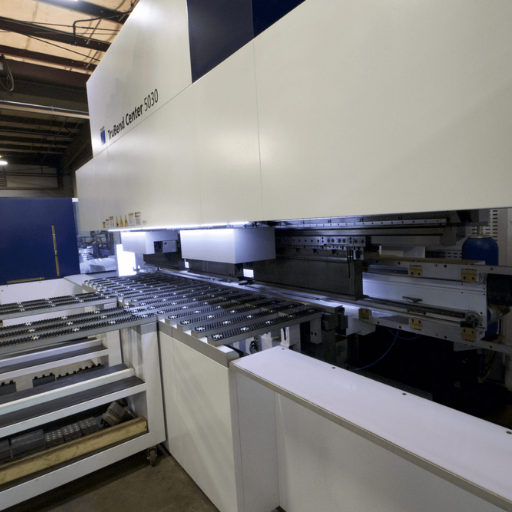
Note the following tips when buying a CNC bending machine:.
CNC Bending Capacity – Confirm that the machine will be able to process the kind, grade, and thickness of the material you intend to work with, as well as all other relevant project bending requirements.
Measurement Precision Guarantees – Identify guarantees, if any, that the CNC machines maintain a high level of quality consistency throughout the manufacturing process, especially for complicated shape profiles.
Operator Training Time – Prefer machines that are easier to operate and come with straightforward software to reduce the amount of time needed to train operators.
Production Requirements – It is advisable to select a machine that caters to your specific demands e.g. whether you require it for mass or batch manufacturing.
Reliability Standards – Inspect the machine’s parts for quality standards of construction and the amount of maintenance needed to sustain machine reliability over extended usage periods.
Price Calculation – Take a closer look at the total price, including the price of purchase, efficiency of operation, and amount of energy expenditure.
Factoring in what has been discussed enables one to make choices that are more targeted towards one’s operational budget and requirements.
What are the features of high-precision CNC bending machines?
With the implementation of high-precision CNC bending, crucial technologies are integrated to ensure Efficiency, Flexibility, and Accuracy in all metalworking operations. These machines’ high precision CNC bending has the following outstanding characteristics:
Bending Accuracy Exceptional: Servo-electric or hydraulic CNC systems execute bending with tolerances of ±0.01mm, which is ideally suited to aerospace, automotive, and electronics industries requiring precision engineering.
Automated Back Gauges: Modern CNC machines are fitted with multi-axis back gauges that position and adjust metal sheets to increase operational efficiency. Such systems enable complex bending sequences.
Software Integration Advanced: High-precision bending machines are equipped with CAD/CAM software, making it possible to load designs directly into the machine. Some of them have real-time simulation capability which minimizes trial and error, thus conserving material.
High Repeatability: The combination of rigid machine frames, precision tooling systems, and Computer Numerical Control (CNC) technology ensures consistent angles and dimensions of bends for large production runs. This is particularly important to ensure quality standards are met throughout mass production processes.
Energy Efficiency: A myriad of modern CNC bending machines are designed to operate at low power consumption levels, and often include energy-saving features like variable speed drives and smart hydraulic systems. These components further assist in the reduction of operating costs.
Versatile Operation: These machines are extremely versatile because they can work with a broad selection of materials, including different thicknesses and angles of bends. Some models have a modular design which enables the alteration of standard components custom-tailored to certain production requirements.
Real-Time Monitoring and Diagnostics: High precision CNC bending machines are often fitted with IoT (Internet of Things) technologies which aids in remote monitoring and diagnostics. Through these systems, operators can monitor performance, capture machine faults at preliminary stages, and carry out predictive maintenance to avoid unnecessary downtimes.
Enhanced Tooling Systems: Advanced CNC machines have the capability to install accelerated setup time tool changing systems, which greatly enhances productivity. Moreover, they are also equipped with precision tools which results in negligible wear and tear, thus prolonging the tool’s lifespan while upholding quality standards of products manufactured.
As per industry trends in 2023, the adoption of CNC bending machines is accelerating due to the increasing demand for precision in manufacturing. According to earlier research by MarketsandMarkets, the global CNC machine market will reach $134 billion in 2026, with a CAGR growth of 5.5% in the following years. This growth will be driven by technological advancements in high-precision machining and their varied applications across many industries.
These insights, paired with knowledge of machine features, help companies strategize their investments into high-precision CNC bending machines.
How to choose the right CNC machine for your manufacturing process?
Choosing the appropriate CNC machine for your manufacturing process needs to be done carefully to ensure precision, efficiency, and cost savings. An overview of factors to keep in mind includes:
1. Type of Machine
Different types of machines serve different functions, including, but not limited to milling, turning, and laser cutting. Assess your primary manufacturing requirements to make sure that the machine in question can handle the specific tasks at hand. Take note that a CNC milling machine does cutting and drilling, while a CNC lathe is used for turning of parts.
2. Compatibility of Materials
Analyze the work materials that you need to process which can be metals, plastics, or composites. Pick a CNC machine that can process materials efficiently and effectively. For example, when dealing with hard materials such as titanium or steel, heavy-duty CNC machines are ideal and for softer materials such as aluminum or wood, lighter machines can do the job.
3. Tolerance and Precision of the Machine
The CNC machine’s tolerance level affects the accuracy of parts produced. Take, for example, high precision industries, like the aerospace sector, and medical devices, which need machines with very tight tolerances, frequently down to microns. Careful consideration of product specifications will enable the selection of a machine with the desired precision standards.
4. Production Volume
The volume of manufacturing varies significantly. Unlike low-volume production, high-volume fabrication may require a different machine. For bulk CNC machining, multi-axis CNC machines with automation are preferred since they shorten cycle times and increase productivity.
5. Software Capabilities
Modern CNC machinery features a new design and automation software. They should have intuitive interfaces and enable synchronization with CAD/CAM tools. There are also cloud-based solutions that provide better control and data management of multiple machines.
6. Cost and Budget
These are always constraints: Highlighting the budget is always a critical factor. Although state-of-the-art CNC machines may have additional features, they are often not economical for smaller firms. In addition to the initial purchase price, consider the total cost of ownership, including maintenance, training, and spare parts.
7. Technological Advancements
CNC technology has advanced significantly with the addition of IoT capabilities, real-time performance monitoring, and AI-powered automation. Machines fitted with these technologies can optimize efficiency and allow for predictive maintenance, reducing downtime.
8. Supplier Reputation and Support
Choosing a reputable manufacturer or supplier is crucial for long-term success. Concern yourself with after-sales support, technical assistance, warranty agreements, and the provision of spare parts when selecting a supplier.
5-axis CNC machines are becoming more popular as they can machine complicated parts in a single setup, which considerably decreases production time, according to the most current market forecasts. Moreover, the CNC machine market is being revolutionized by the integration of Industry 4.0 technologies like machine learning and IoT, which enhance performance monitoring and operational efficiency. It has been reported that the application of advanced machines by manufacturers has the potential to improve productivity by 20-30% while simultaneously decreasing errors and waste.
In order to maximize the optimization of business processes, enhance competitiveness in the market, and improve the functionality of CNC machines, manufacturers need to analyze their specific production requirements and stay informed towards advancements in technology.
What is the role of computer numerical control in modern fabrication?
CNC or Computer Numerical Control hasn’t just modernized fabrication processes, it has improved accuracy, speed and flexibility in various industries. Mills, lathes, and routers that are controlled by CNC systems are already pre-programmed and so they ensure the parts being produced are accurate and consistent.
As per the recent statistics and reports, the CNC machine industry is predicted to hit $117.17 billion by 2030, meaning a growth of 5.5% on average every year. This growth can be attributed to factors such as increased need for mass personalization. CNC technology is best known for rapid prototyping and high-speed production without compromising the quality.
Reduction of human error is a significant contribution of CNC in fabrication. Compared to automated systems that follow set guidelines with tolerances as low as 0.001 inches, manual machining is considered to be inconsistent. With the level of precision being crucial in industries such as medical device manufacturing, automobile, and aerospace, CNC devices have emerged as a more reliable option.
Also, the unmanned operation of peripherals increases productivity as machines can run continuously, further reducing operator/employee intervention. Additionally, multi-axis features allow for expanded design fabrication possibilities which makes the production of many complex geometrical shapes possible, things that could not be achieved manually. CNC users report a reduction of up to 40% in manufacturing times from older technologies.
CNC also supports sustainable practices because of the reduction of material waste. During the preproduction stage, advanced software simulations optimize tool movement and material and resource allocation, aligning with industry efforts towards more environmentally friendly manufacturing.
CNC technology is pivotal in the future of fabrication, whether in massive industrial facilities or small-scale workshops. Companies implementing modern fabrication techniques should anticipate improved operational performance alongside gaining a competitive advantage in demanding markets.
Reference Sources
- A CAD/CAM/CNC Curriculum for High School Students
This project covers the integration and instructional uses of CNC machinery.
- The Impact of a Three-Axis Computer Numerical Control (CNC) Shaping Machine on Designing
This research study analyzes the design and construction of CNC machines, with particular attention to their accuracy and versatility.
- Design and Analysis of a Small-Scale Cost-Effective CNC Milling Machine
This work centers on the design and analysis of CNC machines, in particular their productivity and economical use of resources.
Frequently Asked Questions (FAQs)
Q: What is a CNC bending machine?
A: A CNC bending machine is a type of machine tool used in the manufacturing process that utilizes computer numerical control (CNC) to automate the metal bending process. It is commonly used in metal fabrication to bend sheet metal into various shapes and angles with high precision.
Q: How does the CNC bending process work?
A: The CNC bending process involves using a CNC machine to control the movement of the upper and lower dies to bend a workpiece. The machine interprets programmed instructions to position the sheet metal accurately and bend it to the desired angle and shape.
Q: What are the advantages of using CNC bending machines?
A: CNC bending machines offer several advantages, including high precision, reduced labor costs, and the ability to handle a variety of metal types and thicknesses. They also improve bending accuracy and efficiency while minimizing errors in metal fabrication.
Q: What materials can CNC bending machines work with?
A: CNC bending machines can work with a wide range of materials, including various types of sheet metal such as steel, aluminum, and copper. They are capable of bending metal sheets into complex shapes required in industries like aerospace and shipbuilding.
Q: What is the role of a press brake in CNC bending?
A: A press brake is a crucial component in CNC bending machines that performs the actual bending action. It consists of an upper beam and a lower die that presses the metal sheet to create the desired bend, guided by CNC controls for precision.
Q: How does CNC bending ensure high precision in metal forming?
A: CNC bending ensures high precision in metal forming by using computer numerical control to execute precise movements and apply consistent pressure. This results in accurate bends and shapes that meet the tight tolerances required in manufacturing processes.
Q: What industries benefit from investing in CNC bending machines?
A: Industries such as automotive, aerospace, shipbuilding, and construction benefit significantly from investing in CNC bending machines. These machines enhance productivity, reduce labor costs, and provide the flexibility needed to meet diverse fabrication demands.
Q: Can CNC bending machines handle complex cross-sectional shapes?
A: Yes, CNC bending machines are designed to handle complex cross-sectional shapes. They can accurately bend metal sheets into intricate designs like cylinders and other geometries required in advanced manufacturing and fabrication processes.
Q: What factors influence the bending accuracy of CNC machines?
A: Factors influencing the bending accuracy of CNC machines include the quality of the machine tool, the precision of the numerical control system, the condition of the press brake, and the operator’s expertise in programming and setting up the machine.

